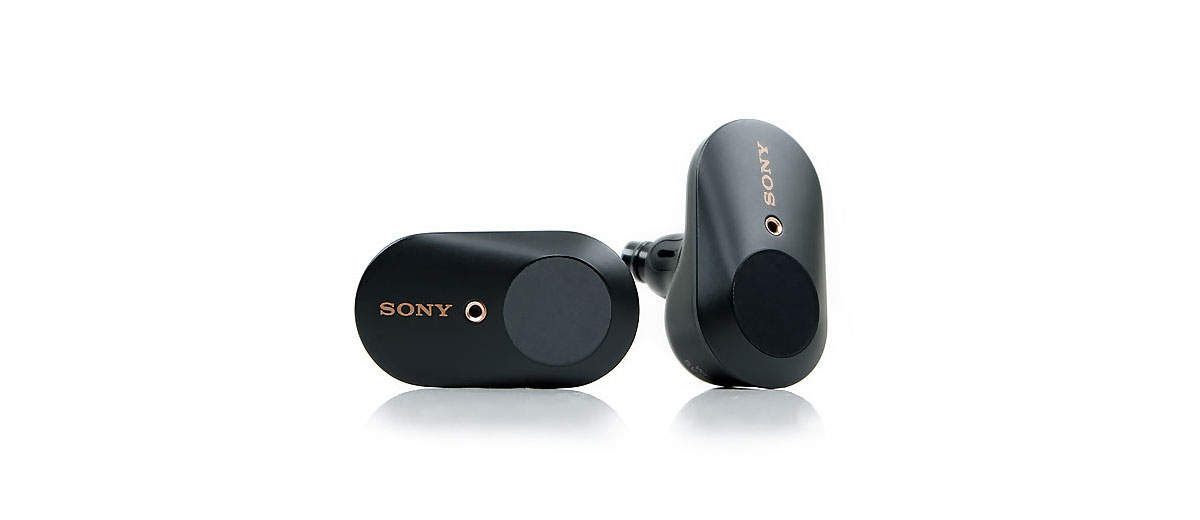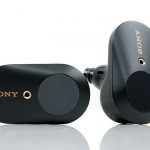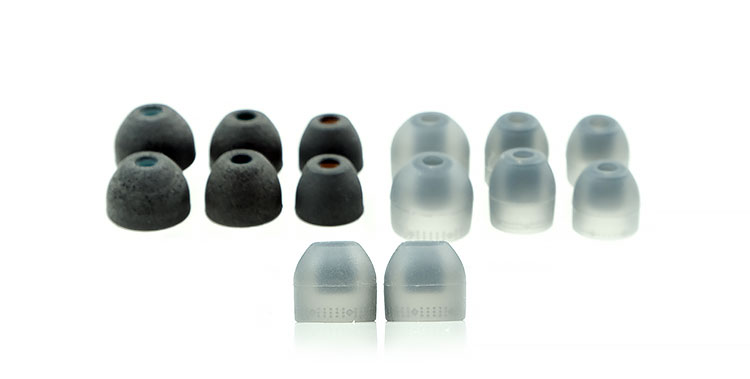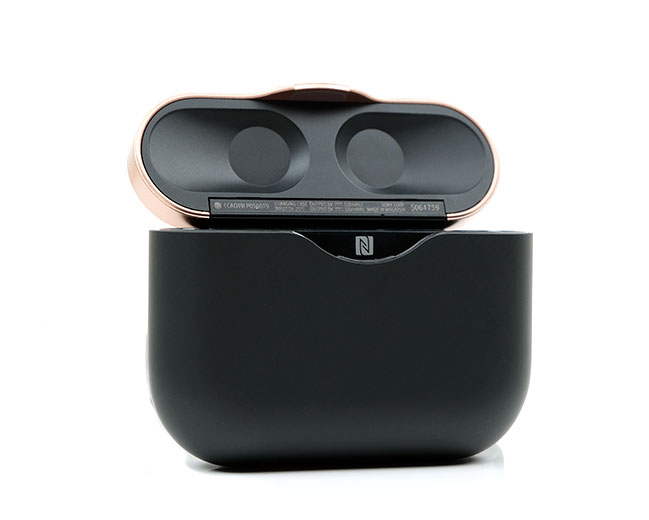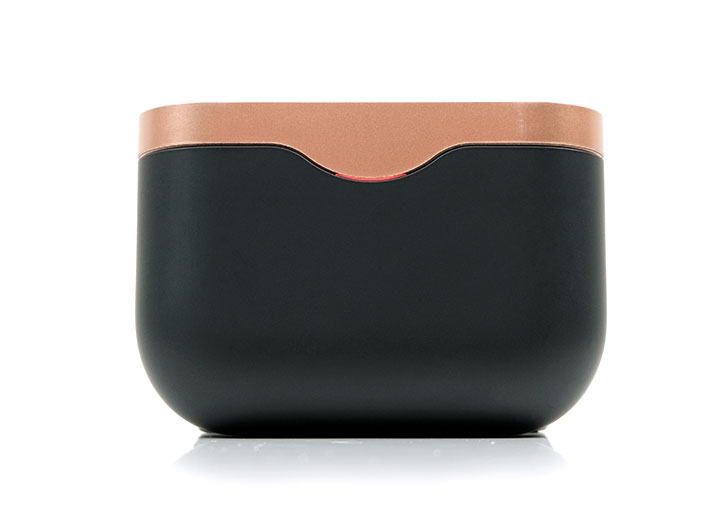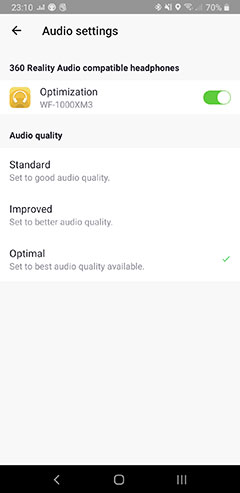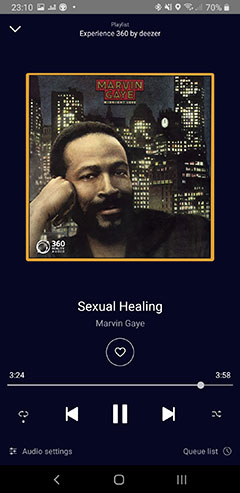The Sony WF-1000XM3 is a TOTL TWS or True Wireless System featuring noise cancel, a 6mm dynamic driver, touch control, and 360 Reality Audio. It is currently priced at $229.
Disclaimer: The Sony WF-1000XM3 was purchased by me directly from a fellow enthusiast and not a sample. If you wish to read up on Sony and its latest product range you can click here.
To read more about Sony products we reviewed on Headfonics click here.
Note, this review follows our new scoring guidelines for 2020 which you can read up on here.
For your reference, this is a 2-page review with performance impressions and comparisons on the second page.
This review was actually going to be the first TWS review when we launched this series at the start of the year. It is by no means the freshest product on the market but it set a standard that is still relevant today. We are doing this now because I felt it might be better to a wider perspective on the TWS market first before dealing with the “Big Kahuna”.
Since picking this up in the middle of 2019 I have used the Sony WF-1000XM3 extensively for travel as well as comparative referencing work for our TWS category. It is by no means perfect and in some areas, new gear has a clear edge. You will pick that up in the review below.
However, it still has a lot of innovative features and a very high-quality ANC performance that recent competitor launches struggle to mimic. The price point of $229 now seems reasonable given other ANC launches such as Sennheiser’s Moment True Wireless 2 is much higher at $299 and 1MORE’s True Wireless ANC is quite close at $199.
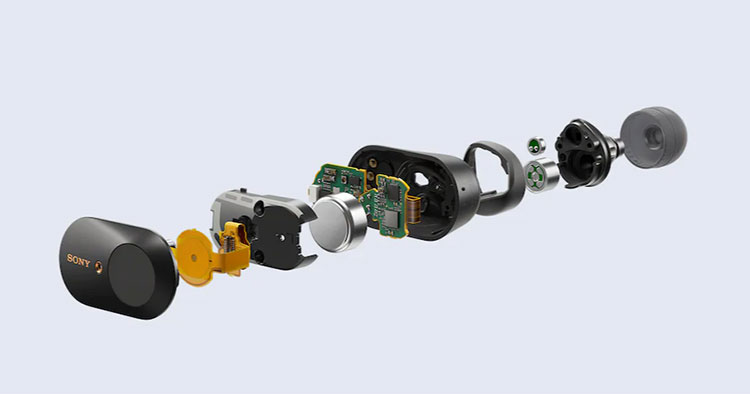
Tech Inside
ANC/Sense Engine
Most everything Sony does is in-house meaning every from the driver to the SoC is made by them rather than sourced or OEM’ed. That includes their ANC technology which they call HD Noise Canceling Processor QN1e.
This is deployed in combination with the use of a dual noise sensor technology using Sony’s proprietary Sense Engine technology. This allows you to set up the Sony WF-1000XM3 to automatically adjust the ANC strength to allow for varying levels of environmental noise to creep in.
The likes of Huawei and 1MORE have a similar tech to give you more control over how you wish to respond to the surrounding noise around you in daily life. However, it is manually operated and not automatically adjusting depending on what you are doing.
Given the Sony WF-1000XM3 has a very high 16.5db of noise attenuation in their ANC, the ability to slide that back or forward without manual tweaks is an attractive feature.
Decoding/DSEE HX
The HD Noise Canceling Processor QN1e is also the Sony WF-1000XM3’s main DAC chipset and amplifier. In short, it is the core SoC. Sony claims the QN1e can handle 24-bit Audio Signal Processing as well as upscale as and when required with the use of DSEE HX which one of their legacy audio tools from their DAPs and headphone range.
I am quite a fan of DSEE HX when used in their DAPs. Typically, it sounds more dynamic, more explosive with more contrast in the timbre of paired IEMs. Without it, the stock sound can feel a lot more neutral and at times boring.
The one curious omission in the WF-1000XM3 tech armory is the lack of aptX decoding with only a maximum of SBC/ACC capability. Despite being the creators of LDAC, you will not find this in the WF-1000XM3 either. TWS systems right now are not capable of that level of data transmission right now in terms of SoC implementation and battery life. Still, aptX would have been ideal as the next best thing.
Driver
The Sony WF-1000XM3 uses a 6mm single dynamic driver with a dome type (CCAW Voice coil) and Neodymium magnet build. That is about par for the size of 99% of the dynamic driver TWS out there. Though nowhere near the size of the huge 13mm graphene diaphragm inside the Edifier TWS NB you will be hard-pressed to notice any ‘size difference’ when using both.
This is a type of driver they have used before only one much larger scale inside their Sony WH1000XM3 (40mm) and one I presume is in-house designed. The performance between the two have very different contrasting presentational qualities, (page 2 for more info), and to be honest I much prefer what I hear from the WF 6mm compared to the WM 40mm.
Bluetooth 5.0
The WF-1000XM3 uses the standard BT5.0 version which I deem the minimum requirement in 2020. They did release this middle of 2019 when a few sets were still rocking BT4.2 so you could argue it was ahead of the curve in that respect.
Sony’s marketing collateral makes reference to a “new Bluetooth chip” which might also mean it is an in-house design. They also refer to the WF-1000XM3 as being driver independent meaning no master-slave type connection but rather connecting both at the same time to the source. That is pretty much like Qualcomm’s True Wireless Stereo Plus and Realtek’s Direct Connection technology.
Design
The Sony WF-1000XM3 has a relatively large and unusual form factor for a TWS. It has an almost T-shaped structure with the nozzle and tip insert dominated by a flatter wider main body, the vast majority of which sits outside of your concha basin.
This design is born out of what Sony calls a Tri-hold structure where the elongated shape uses three specific points in your ear to make contact with to keep it steady and comfortable. It also means the control features are easily accessed without causing the drivers to move and break the ANC sweet spot.
Save for the gold-plated contacts and mic ring, the WF-1000XM3 is entirely made of black finished high-density plastics. However, the engineering is really high quality and typical of any modern Sony product out these days. Particularly so when you see them settle in the cradle. Top-notch precision cutting.
The circular plate in the center of the drivers is actually where the touch controls are houses and have a slightly glossy smooth consistency to the matte main housing.
Also, the one final note on the design is the lack of water resistance or IPX. These are not the type of TWS for a workout in the gym or outdoor use where liquid contact is possible. Bummer.
Comfort & Isolation
The Sony WF-1000XM3 underside is a bit ugly in terms of aesthetics for me but I am presuming all the bends and bulbous finishing is specifically to fit smoothly into your ear.
One thing to note just on the top of the nozzle is a rubbery finish. HELM use this also as do 1MORE with their ear hooks. It is a design that grips really well with ears as well as adding some additional passive isolation. You would expect this sort of design to be a bit loose and whilst it is not as secure as the 1MORE hook system I have never really felt like they would fall out during regular use.
The shape of the nozzles are also a bit angular, (forward and up) and they do slide and fit better into your ear due to this upwards curve. They are also relatively long and deep which places a bit more emphasis on the tip choice since the majority of the shell sits away from the shape of your ear.
Tips
Sony supply two different types of tips, a clear lighter silicone single version and a denser black single bore with a thicker internal stem. Both come in small, medium, and large with clear having one spare fitted out of the box.
Both do a relatively good job of keeping the Sony WF-1000XM3’s in your ear, however, I had a slight preference for the taller transparent tips which felt a little gripper. I say slight because their passive isolation is not quite as good as the thicker black tips. However, when the ANC is flipped on this becomes less of a concern for me as both seem to isolate to a similar level.
ANC
The noise-canceling on the Sony’s are the best I have heard to date. Now that does not mean that simply attenuate the most but rather how they shape and control the level of attenuation right across the frequency range to produce the most pleasing ANC.
My comparisons were based on the 1MORE’s True Wireless ANC, Edifier’s TWS NB, and Huawei’s Freebuds 3 whom I all rate as inferior for a number of reasons.
What I noticed about the ANC on the 1MORE is just how good it is as pushing down on sub-1k noise to a min but on the flip side, it lets a lot of higher frequency noise slip in. That creates a sort of whistling sound effect that can sound annoying. The Edifier TWS NB is more balanced in attenuation than the 1MORE but not as complete or as aggressive as the WF-1000XM3.
The Freebuds are more of a bonus as they are an open design. They do quite well actually up to 15dB but the open nature does mean a lot of tweaking to get it just right and like the 1MORE they are not as good at HF attenuation.
Ambient Sound Control
This system is what makes the WF-1000XM3 a bit special for me in terms of how to manage isolation. Not only can you opt for an ‘all in’ level of noise cancellation but you can also switch to various degrees of noise attenuation and amplification via their Ambient Sound control which you can find in their Headphones Connect app.
You have up to 20 different levels of attenuation which you can manually control from complete NC to almost nothing. You might think, well hold on, that’s nothing new since Huawei and 1MORE have that also with their pass-through mode. However, neither of these systems will automatically sense what you are doing and adjust accordingly. That is pure genius from Sony and it actually works.
The WF-1000XM3 built-in sensors will automatically detect if you are walking or resting and change the level of ambient sound to let in depending on your activity. You can also customize the settings before using them automatically to fine-tune it to your own preferences.
Those sensors will also automatically detect you taking out the WF-1000XM3 from your ear(s) and stop or pause any audio until you put them back in again. That only becomes an issue when I momentarily take out maybe one earphone to scratch my ear or readjust. If it is an issue for you then you can hop into the WF-1000XM3 connect app and turn it off in the system settings.
Cradle
Despite it being a rather large TWS case, it is one of the most attractive cases out there with its pleasing but clean looking mix of a retro tone of tan and black.
The attention to detail is excellent. From the lid contouring, latch mechanism, contact positioning, and a recessed USB_C port to the rear are all engineered to a very high level. When slotting in the earphones they fit perfectly flat with no tweaking for the charging to start automatically.
The only complaint is that its almost too perfect looking design-wise. Given the build is almost entirely plastic, much like the drivers, you might be forgiven for wanting to baby it everywhere you go. I would advise popping onto Amazon or Lazada and grabbing a cheap matching colored silicone case with a carabiner hook for about $10 to give it that final layer of protection.
Battery Life
If you want good battery life in a TWS do not pick ANC, at least not yet. When I originally got the WF-1000XM3 I wasn’t overly impressed with the battery life.
That is until I saw the competition’s numbers and felt they did quite well at 6 hours per driver with NC on and 8 hours with the NC off. Compare that to the 1MORE and Edifier’s NC performance at 5 hours and it does have an edge. The Freebuds 3 are even worse at just 4 hours with NC on.
The cradle is a little weak for me at just 18 hours on the Sony compared to 22 hours on the 1MORE and Edifier cases. The WF-1000XM3 also offers fast charging via its USB-C port with a 10 min charge offering up to 90 mins playback. There is no wireless charging, however.
Still a long way behind the likes of the TEVI at 70 hours but as it stands the Sony seems to offer the most competitive offering for battery life among the ANC gear we have here.
Controls
The WF-1000XM3 has a very blended approach between touch and app-based control features. To be honest, if you do not use the app you will only have access to a tiny portion of that the WF-1000XM3’s can actually do. I would argue that the app is THE control device and the WF-1000XM3 touch features get their cue from the software side.
Sony Headphones Connect App
This is one of the better apps out there for TWS. The recent firmware update (7.0.1) has also tidied up the layout considerably and given it a more organized structure. Basically, you have three areas you can control or observe, status, sound, and system. Anove which you get a snapshot of the battery life of both the drivers and cradle.
Status
The Status section is fairly passive and it simply tells you what media you are playing and the adaptive sound control status, for example staying (sitting) or walking. You can play/pause and forward or previous track select from within this page also but that’s about it.
System
The system section controls the features you can access from the touchpads on the side of the drivers. You have a wide range of choices including the ambient, playback, and volume controls. You can also set up for either Google Assistant or Amazon Alexa. Personally, I tend to throw in volume on the right and NC on the left as those are my most used features on the WF-1000XM3.
Other controls include disabling the sensor for pausing media when taking out the earphones and whether you want to turn the earphones off when not used for a period of time. I do recommend you activate that last option as there is nothing worse than a dead battery when you forget to turn them off.
Sound
This is probably where you are going to spend most of your time with the app since it houses the sound tweaking and NC functionality. For the NC controls, you can refer to our ANC section above.
Below the NC and Ambient Sound control suite are 3 key sections, the EQ, 360 Reality Audio setup, and the Sound Quality Mode including DSEE HX mode. This is a 5-band EQ so not the most expansive but it does give you 8 distinct presets and one user-customizable. You can also adjust the level of bass independently with their Clear Bass slide just below.
I tend to enjoy the Excited and Vocal the most out of the presets. The Excited preset is fairly distinguishable as a traditional V-Shaped high contrast sounding signature whereas the Vocal present introduces a bit more 1k emphasis and slightly less bass/treble contrast.
360 Reality Audio
360 Reality Audio is something new for me and I had to dig into Deezer’s back catalog to figure out what the big deal was about this. At a very crude level 360 reality Audio is built from the open MPEG-H 3D Audio standard and optimized for streaming. It gives engineers the flexibility to map out exactly how they want their imaging to sound. The idea is that you are placed right in the middle of the performance rather than the traditional front and center 3rd row or further behind.
You do have to set everything up first, however. You cannot simply play a track for it to work. There are two stages to that in the app, an ear shape analysis, and an apps analysis. The ear shape is tricky as it involves you taking pics of your ear and the app mapping it out. Once completed you will be integrated with your chosen app and you can go ahead and play the tracks.
The effect is stunning, to be honest. Playing Marvin Gaye’s Sexual Healing, which is one of Deezer’s lead 360 Reality Audio titles, the spatial cues are coming at you left right and center, making for an incredibly immersive experience.
I quite forgot I was listening to an SBC encoded streaming track such was the attention to detail and how easy it was to pick out each individual instrument.
Packaging & Accessories
The WF-1000XM3 is pretty much your standard fare from Sony. A compact white retail box sleeve that slides off a black flip lid box. Inside, everything is very neatly laid out in a relatively flimsy plastic contoured tray.
Aside from the drivers and case you get the tips, a short USB-C to USB-A charging cable, and the tips housed in a plastic sealed tray. You also get a user manual and various Sony leaflets including warranty instructions for your region.
Click on page 2 below for performance impressions & comparisons

